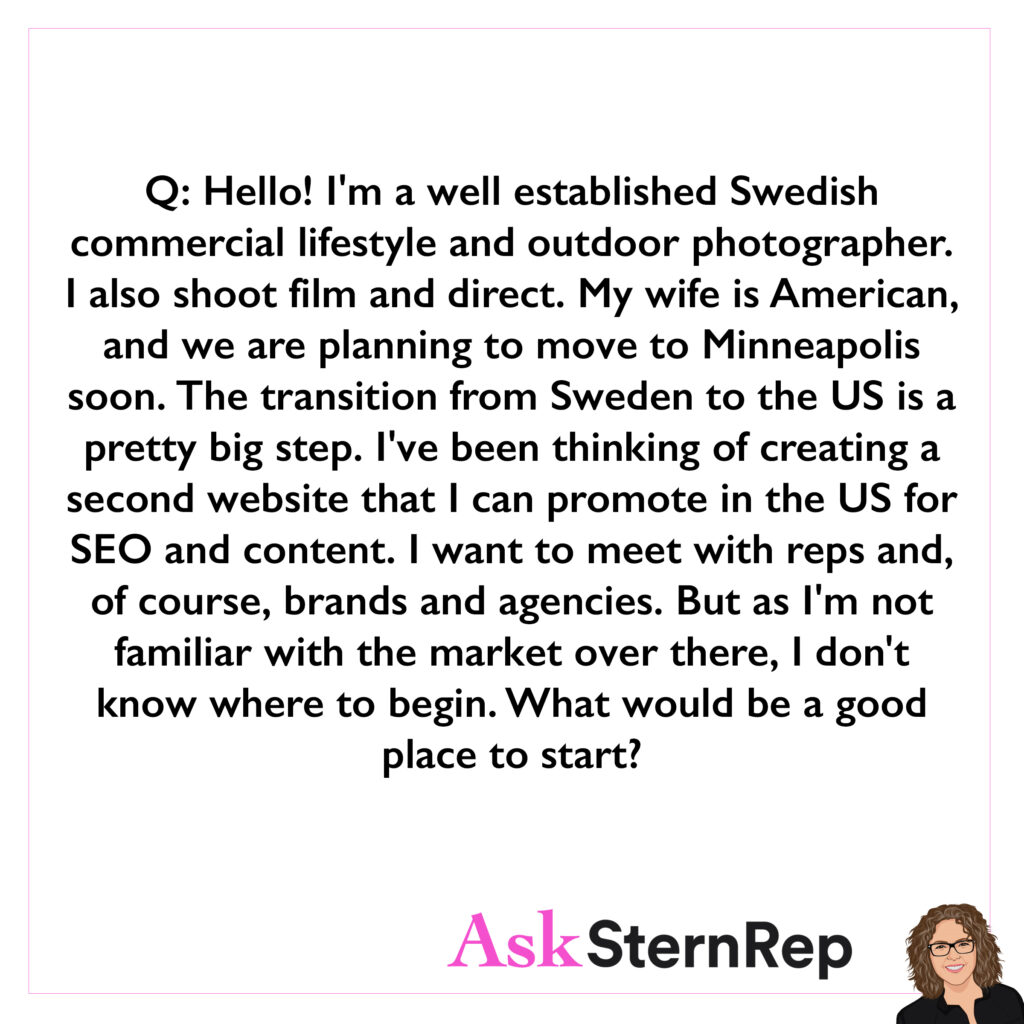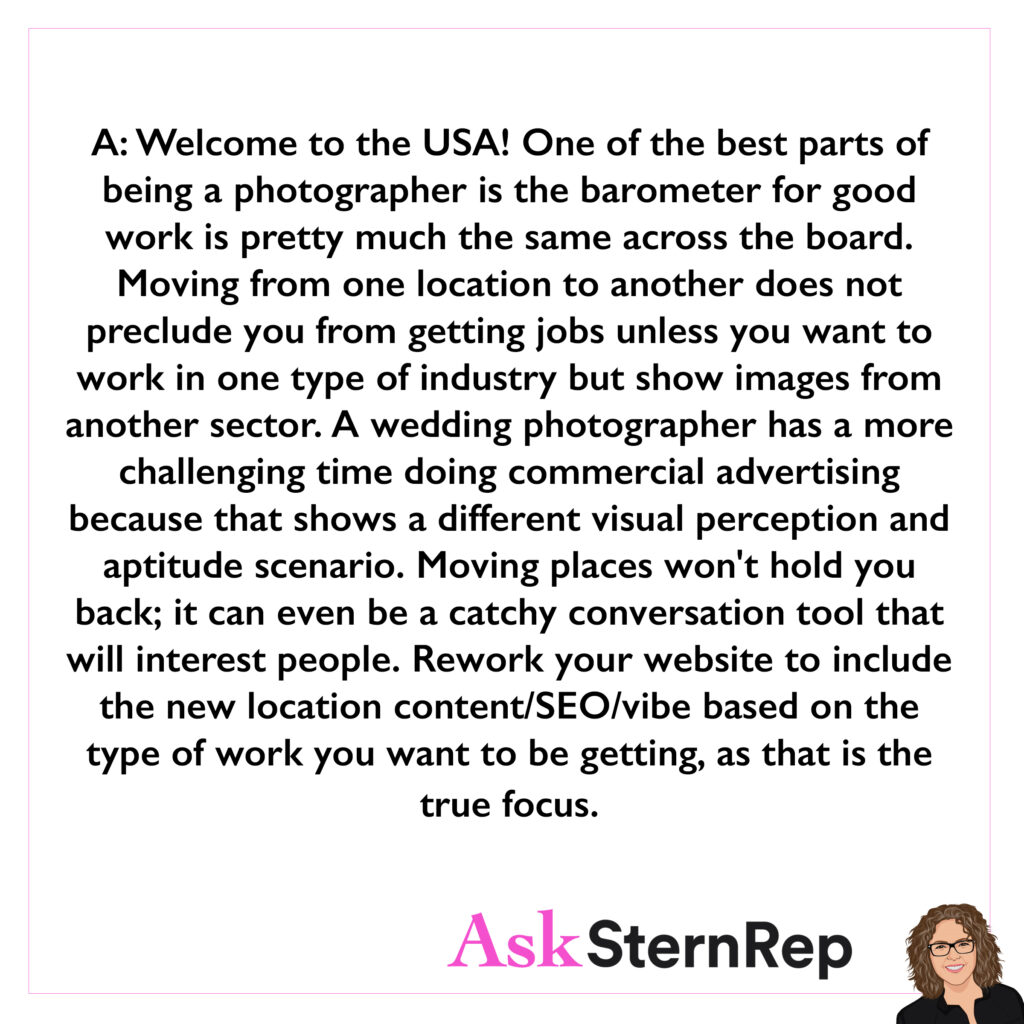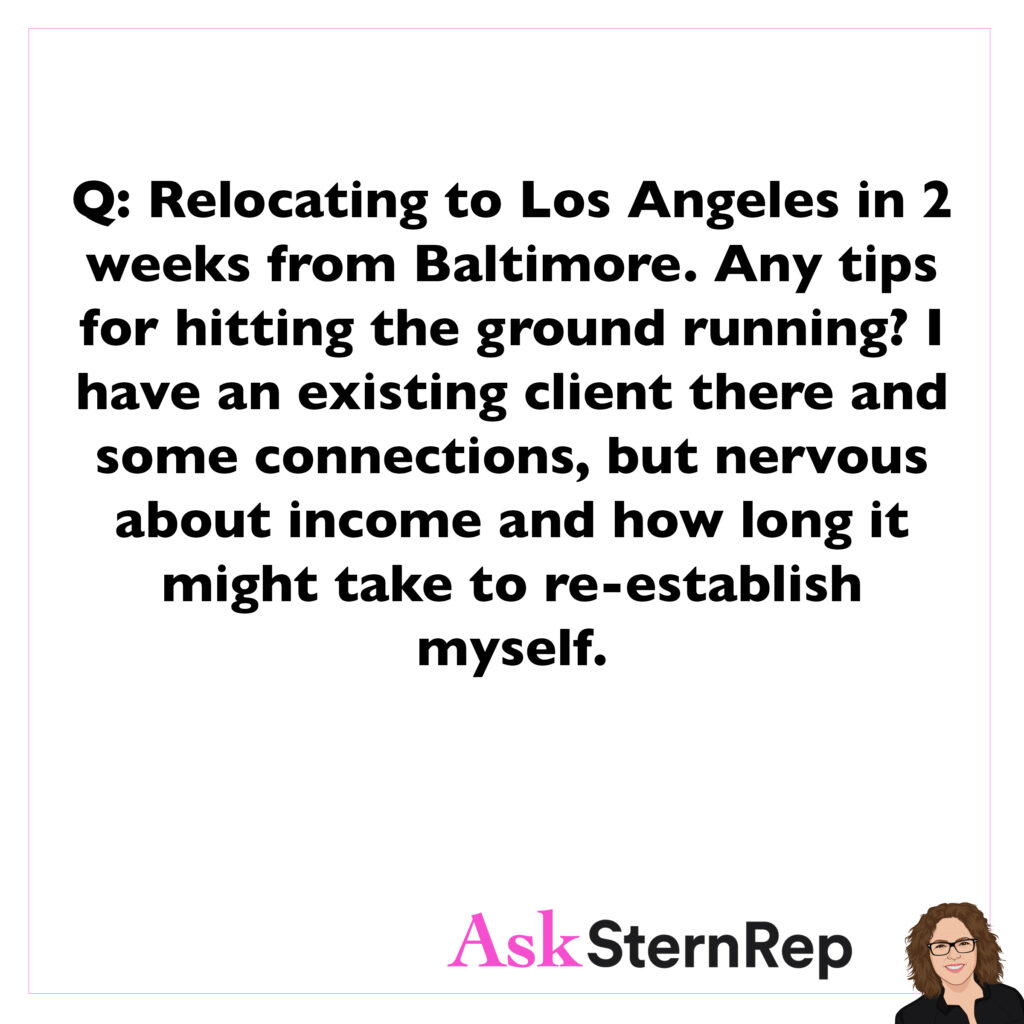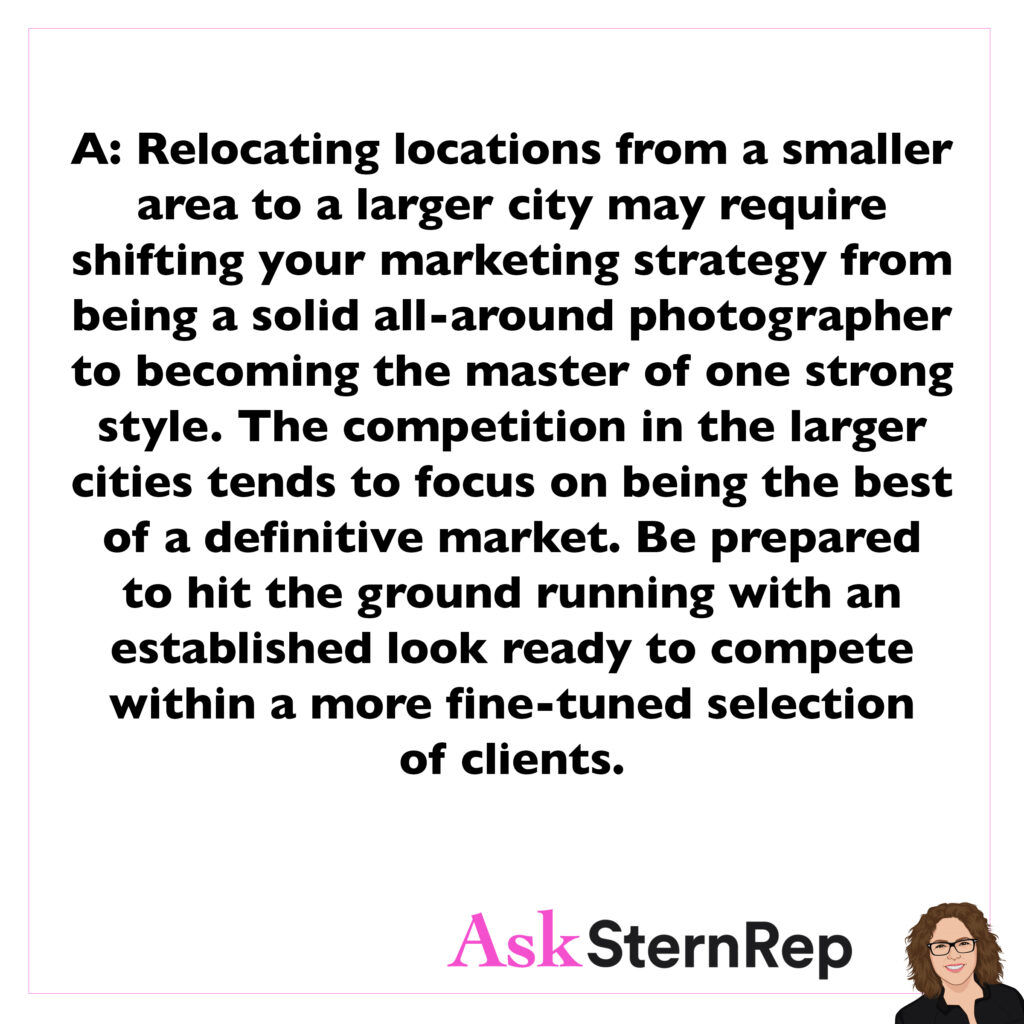Every photographer can have that REP MENTALITY mindset, no matter your situation. Your job is to continuously keep your REP (Mentality) excited by actively feeding your marketing supply chain.
Marketing
You Are a Business Owner With a Marketing Mentality
Photographers come from the training to be a photographer. I get it, but we must treat it as a business for this training to pay off. 24/7, you are now a business owner with a Marketing Mentality, always by your side and ready to go. What company can exist without marketing and self-promotion? We have to open up our sights, taking this where we want to go.
Marketing Tip = Timeliness
Marketing Tip = Timeliness
Immediate follow-up is one way to secure your position in a client’s memory.
Use the open door at the moment to open the doors of your future through LinkedIn, IG, a handwritten card, send a plant, an email or any type of old-fashioned follow-up whether you get the job or not. Go with what works by using the moment to your advantage.
How to Set Up Your Instagram to Bring in Jobs
When done right, Instagram is a free marketing platform that can consistently get your work in front of the right clients and help you grow your business. This Webinar will not be about turning you into an Influencer. We highlight practical strategies that every commercial photographer can deploy to shape their creative presence and optimize Instagram to build an audience that can help create a sustainable business. Originally aired as part of APA Chicago’s workshop, “Industry Experts Talk Photography Growth Strategies for 2022”.
Co-host: Photographer + SternRep/AskSternRep/ASRsocial Creative Director Ranee Vespi https://www.raneevespi.com
Apply now to ASRsocial→ https://www.bit.ly/ASRSOCIAL
Don’t Spend Time On Your Marketing By Looking Like Another Mass Spam Junk Email
Don’t waste all that you put into your Marketing by looking like another mass spam junk email.
Here are some simple ways to have potential clients take our marketing to that next level by clicking to see more.
Easy ANTI-SPAM Checklist:
- Send your emails only to the correct contacts.
- Sound like a human to human with real words as if you are talking.
- Email new images without repeating yourself
- No need to sound “sales-like” as they know why you are contacting them.
ASRsocial is Open for Business

We are currently accepting applications for photographers who could use a revamp on their Instagram + will be taking on a limited number of clients. Price options will vary depending on individual needs.
ASRsocial is an out-of-the-ordinary social media management service working exclusively with commercial advertising photographers’ looking for new ways to jumpstart their Instagram account.
Photographer agent Andrea Stern is behind-the-scenes, with creative director Ranee Vespi of @sternrep and @asksternrep being the lead contact as we give to you what we have discovered together.
Andrea Stern of @asksternrep/@sternrep: “Have your IG work for you instead of against you. We all know that Instagram is the way to be seen and discovered right now. It’s the new portfolio show and the new email promo. We have to stick to the times and lead the way if we want to be getting the jobs.”
ASRsocial offers:
- Critique of Instagram + Website by SternRep/AskSternRep’s Social Media team, including rep Andrea Stern
- 1-on-1 Coaching with Ranee Vespi, SternRep/AskSternRep’s Creative Director
- Individualized Instagram Strategy
- Personalized Packages
- Branding You as a PERSON, not just as a Photographer // Show your authentic self on Instagram
- Engagement System Plan
- Design + Scheduling Feed
- Content Creation
Apply now→ https://www.bit.ly/ASRSOCIAL
Top 5 Business Goals for Photographers
Five Business Goals for Photographers
- Updated portfolio to show off the tightly branded type of work you want to get vs. a resume of work you have done over the years.
- Modified marketing direction plan keeping up with the times and even one step ahead.
- Buttoned up admin downtime work to avoid last-minute scrambles with equipment, crew, treatment and estimate templates, insurance, payroll, taxes, finances, etc.
- What don’t you know? Outsourcing is key.
- Practice that “CAN-DO” attitude in sync with our industry’s fast and furious evolving climate.
Moving Countries, Not Industries


Q:
Hello! I’m a well established Swedish commercial lifestyle and outdoor photographer. I also shoot film and direct. My wife is American, and we are planning to move to Minneapolis soon. The transition from Sweden to the US is a pretty big step. I’ve been thinking of creating a second website that I can promote in the US for SEO and content. I want to meet with reps and, of course, brands and agencies. But as I’m not familiar with the market over there, I don’t know where to begin. What would be a good place to start?
A:
Welcome to the USA! One of the best parts of being a photographer is the barometer for good work is pretty much the same across the board. Moving from one location to another does not preclude you from getting jobs unless you want to work in one type of industry but show images from another sector. A wedding photographer has a more challenging time doing commercial advertising because that shows a different visual perception and aptitude scenario. Moving places won’t hold you back; it can even be a catchy conversation tool that will interest people. Rework your website to include the new location content/SEO/vibe based on the type of work you want to be getting, as that is the true focus.
Relocating to Los Angeles


Q:
Relocating to Los Angeles in 2 weeks from Baltimore. Any tips for hitting the ground running? I have an existing client there and some connections, but nervous about income and how long it might take to re-establish myself.
A:
Relocating locations from a smaller area to a larger city may require shifting your marketing strategy from being a solid all-around photographer to becoming the master of one strong style. The competition in the larger cities tends to focus on being the best of a definitive market. Be prepared to hit the ground running with an established look ready to compete within a more fine-tuned selection of clients.
How Do You Stand Out From The Competition?
What is your sales tool component that stands out to separate you from your competition?
Is it your personality, a production capability, or your skillset?
What do you offer that helps your marketing/sales approach push you to be 1st choice for projects?
This specific something about you can shape your entire direction.
Follow it, know it, explore it and grow from this specialty to keep yourself on top of the pack.
Think about the sales of what you do. You need to be competitive with many others, so how do you make the numbers work in your favor? Rely on something very specific to you that limits your competition. Your approach can focus on this unique skill set, something you’ve done in the past, your reputation, your history, or your interests.
For example, I represent a duo with a very specific niche. They should leverage that uniqueness every time we bid on a job. They should highlight it in their treatment and discuss it during the call. It should be a major focus because it sets them apart.
Use what you have and rely on it. If you’re unsure what that unique aspect is, take the time to discover it. This can become your best marketing tool, sales approach, focus, and direction for your website, images, or testing. Think about it, use it, and remember it can evolve over time, but make sure to use it effectively.
